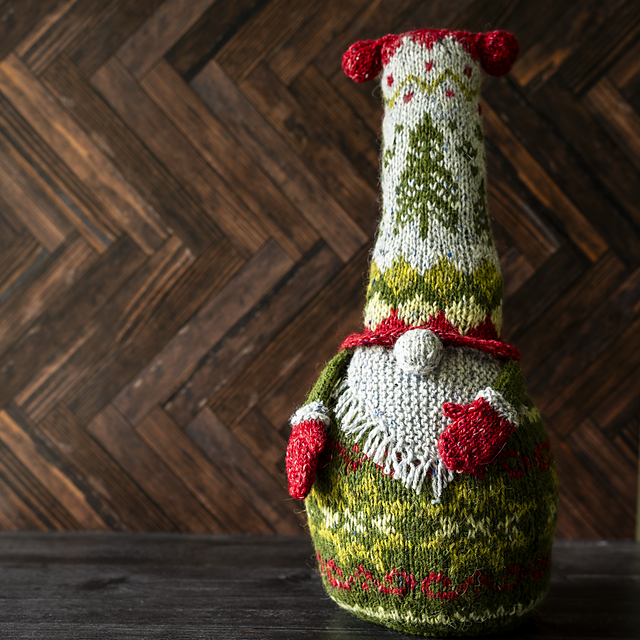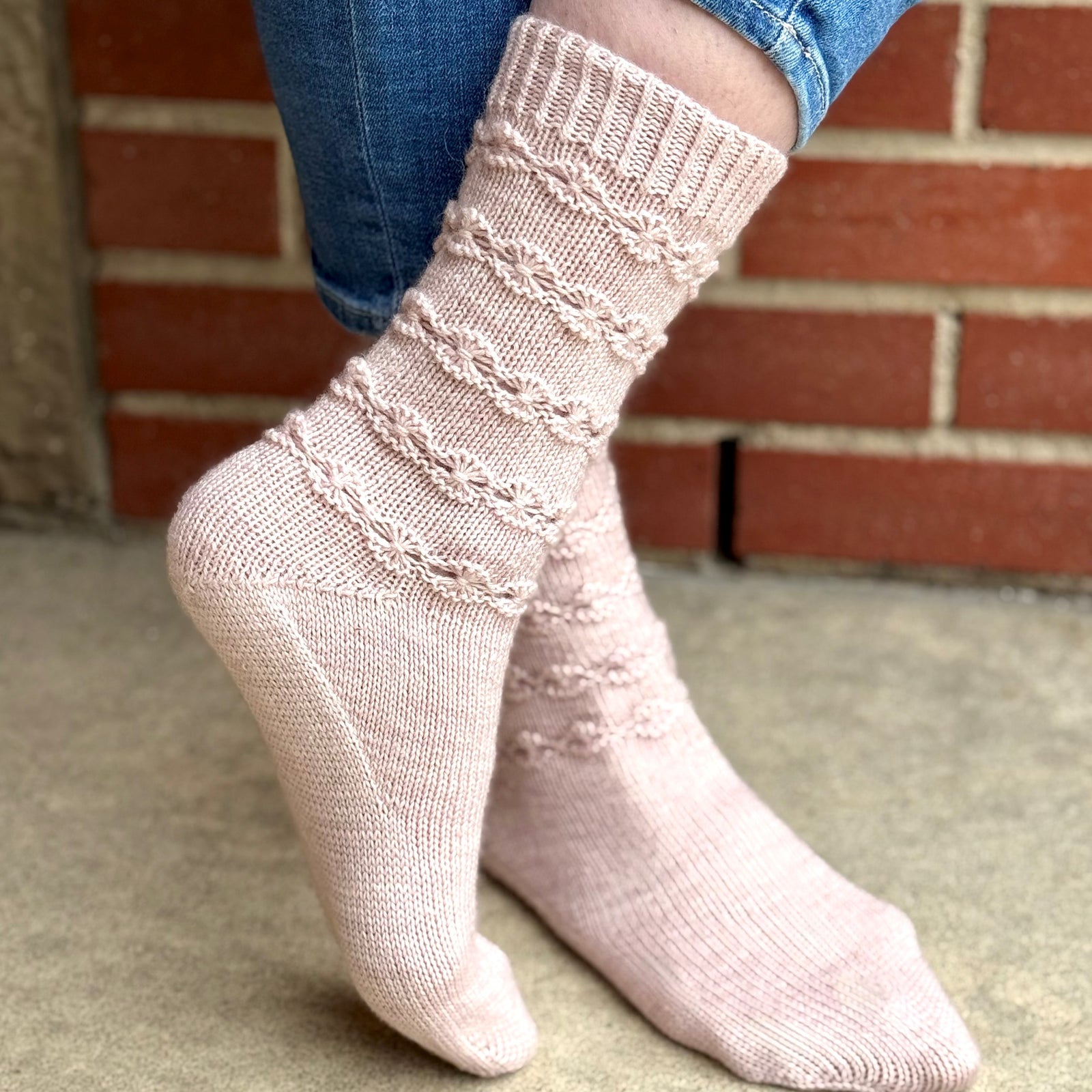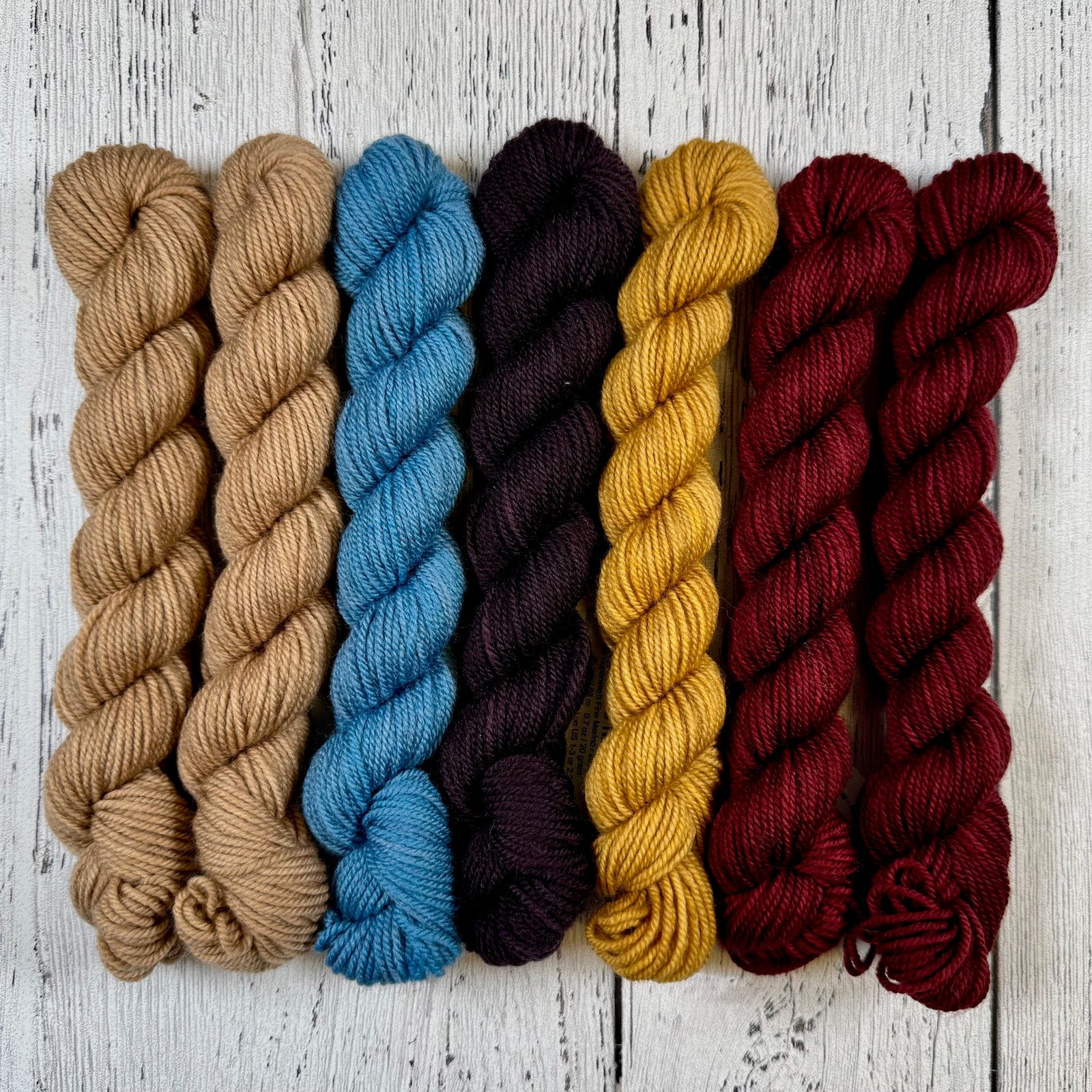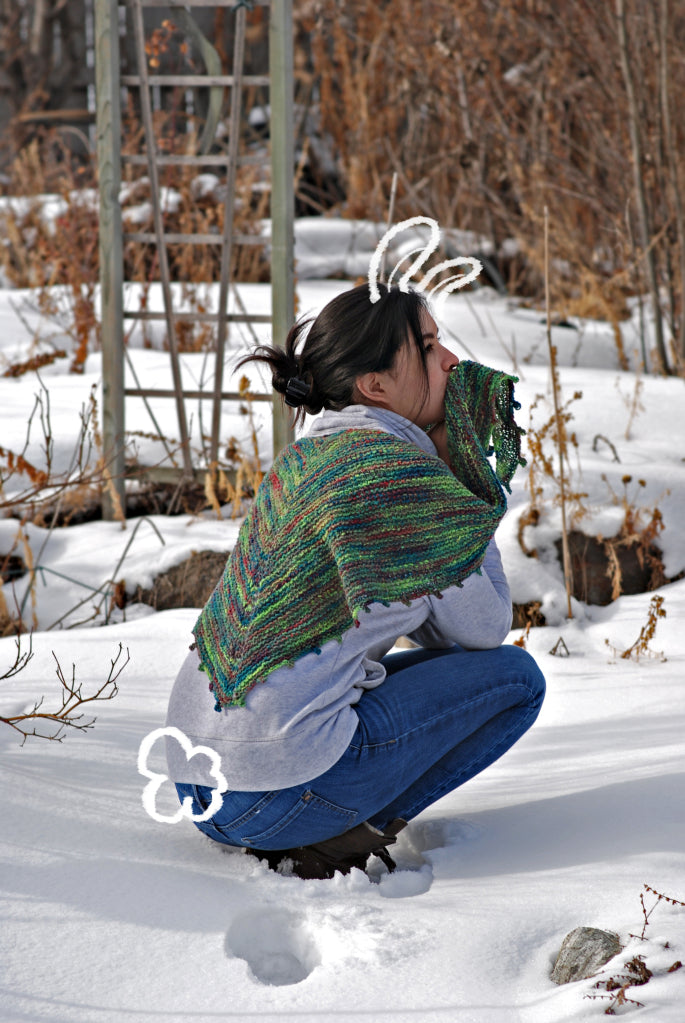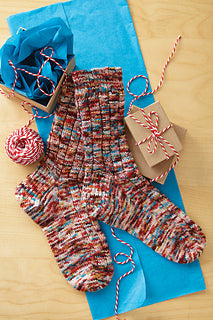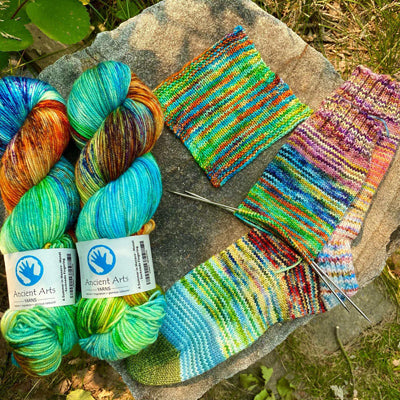I have a passion for colour. As I am a dyer by trade, this likely comes as no surprise, but it’s been a central part of my life as long as I can remember. Colour in any form attracts me and pleases my heart. According to science, the human eye can see somewhere in the neighborhood of 10 million colours, so there are a LOT of colours out there for me to be passionate about! And this is why, after 46 years, knitting still holds as much fascination for me as it ever did. Thanks to the magic of the infinite variations of colour possible in the intersection of dyes and fibres, every skein of yarn has its own unique combinations of colours, and thus the act of knitting lets me enjoy those combinations with every stitch.
Hand dyed yarn isn’t the same as commercially dyed yarn. Commercial yarn is, by its very nature, uniform. There are exceptions (such as some of the Noro yarns) but for the most part commercial yarns are planned, regular, and consistent within large dye lots. The process of hand dyeing is different, taking place in small, intimate batches rather than giant vats, and the creation of each skein is much more personal. Human hands touch each skein as it gains colour, and each skein is subtly (or overtly) unique. In spite of this unique quality inherent in hand dyed yarn, there are nonetheless some consistencies between skeins that originate in how a skein of yarn is dyed. So let’s explore how a dye style can affect how a skein of yarn will behave when we knit (or crochet) it.
The dye styles that I, and other hand dyers, and even commercial companies use can be broken down into families. Each family will behave in its own predictable way when it is knit or crocheted, and produce distinctive results. Some dye styles will involve multiple techniques and some just one, but the end result is a yarn that has its own way of patterning when it is knit. It’s useful to know about these styles because when you go to buy yarn, you can look at a skein and determine what it will do when it is knit or crocheted.
The first style to consider is called tone on tone (or semi-solid) and is created by the process of immersion dyeing (also called kettle dyeing) where large pots of water are used to dye the yarn. The yarn floats freely in the dye bath and the dye bonds freely. These are colours where the various shades found in the skein are all related. Parts of the skein will be lighter and parts are darker, and some tone on tone colours will have a lot of variation and some just a little. With this dye style the shading will show most clearly once the yarn is knit. Some examples of Ancient Arts tone on tone colours are Under the Sea and Spanish Lavender. As you can see in the sock and wrap shown below, the tone varies when it is knit (to see a larger photo, click each image below to view full size).
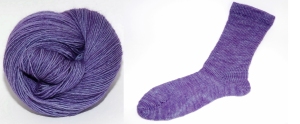
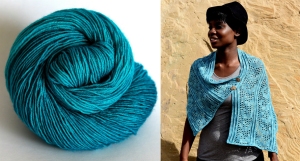
Variegated colours are those where there are multiple colours mixed together in one skein randomly. These colourways can be dyed using a variety of techniques including immersion in either large or small amounts of water (which changes how dye moves), or they can be hand painted, or they can be a combination of all these techniques. Regardless of the technique, when you look at such a skein it will have multiple colours on the skein, but these colours will be randomly distributed and will form no pattern. Nor will they repeat regularly. When such a colourway is knit or crocheted, the colour will be distributed randomly throughout the final item. Examples of this sort of colour are Frolic and Rose Tribute. As we can see in the socks below, the colours form no pattern when the sock is knit.


Variegated colours can have subtle patterns when knit if the dyer deliberately patterns the mixed colours that are applied to the skein! Brown Tabby and Inuit Art are colourways that will show subtle patterning when knit because the colours are applied in a regular pattern to the yarn. You can predict this when looking at the skein if you see bands of colours, as is visible on the balls of yarn below. These patterns will often be minimized by knitting with more stitches.


Stippling is a method of applying small amounts of dye to yarn that will produce a single stitch of each colour when the yarn is knit. This technique can be used along with other dye techniques that lay down larger amounts of colour. A good example of this style of dyeing is Cross Stitch Sampler. When this yarn is knit, the darker colours form single (or maybe) two stitches of the work, and thus the item appears to be speckled. This technique can form patterns in knitted items as you can see in the sock below, but those patterns formed by small spots of colour disappear when knitting items that have larger stitch counts such as shawls.

Hand painted yarn, also known as colour block yarn, dyed across, etc is yarn that has distinct blocks of colour dyed along the skein. This form of applying colour can be done with larger sections of colour, or shorter sections. The length of the sections of colour will drastically affect how the yarn will work when knit. Regardless, this style of dye work will cause some form of pooling, where the colours form sections and blocks, the shape of which will depend on the number of stitches. Knitters can choose to work with this pooling tendency in these colours, and knit designs that take advantage of them, but it’s important to understand that they will behave very differently depending on stitch count.
The Ancient Arts colourway Inspired is a perfect example of a yarn that has longer colour sections dyed on the skein. When knit into a sock, these can form stripes or pools depending on the stitch count. In the sock shown below the gauge on the leg of the sock is 8 stitches to the inch (2.5mm needle) and in the foot it is 9 stitches to the inch (same number of stitches). Notice how in the leg the yarn stripes, but in the foot it pools! And when this same yarn is knit into a larger item, the pooling effect can be most pronounced (if one uses the right number of stitches) as we can see in the stole pictured below.
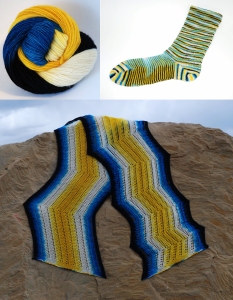
Calico Cat is an example of a hand paint style yarn that has short colour repeats. Yarn that is dyed with short colour repeats will not form large pools and blotches when knit. Instead, it will either flash (where it forms a zigzag pattern) or it will form small colour blocks. It is not possible to knit this yarn so as to get large pools of colours, no matter what the number of stitches or weight of yarn is being used.

Yarn and colour hold endless surprises and delights for the knitter and crocheter. It’s been a lot of fun to share some knowledge about how dye styles can intersect with these crafts to form gorgeous creations and inspire us! We hope you share some of your discoveries with us too...


